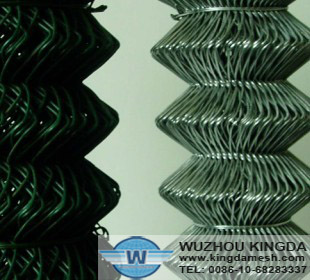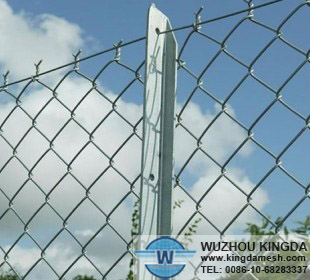Parts of a Chain Link Fence
Parts of a Chain Link Fence
A chain link fence makes an efficient, long-lasting property boundary. It's relatively simple for a do-it-yourselfer to install. Before starting the fencing project, it's important to have a clear idea of where property lines are located. Contact the local utility companies to mark where buried lines are before you begin the installation. If you plan to landscape in the future, install a gate or other opening in the fence wide enough for a garden tractor to pass through.
Posts
The metal posts for a chain link fence are the key component that determines the durability of a fence. Fence posts made from heavy-gauge metal are the best option. Stainless steel is at the high end of the selection list, while aluminum posts are at the lower end. If the metal is too light, the posts might eventually bow or bend and cause the fence to sag.
Posts come in two diameters. The wider, 2 3/8-inch posts serve as corner and end posts, such as around gate openings. Smaller, 1 5/8-inch posts are available as line posts. All posts should be long enough to bury below the frost line in your region, plus provide enough height for the fence. The posts are set in a bed of concrete to anchor them firmly in the ground. Post caps provide a finished look to the tops of the posts.
Connectors
The posts form a portion of the skeleton of the chain link fence. The rest of the skeleton is the top rail portion of the fence. The rails connect the fence posts with each other and provide support for the chain fabric. Each end of the chain fabric has vertically-placed tension bars attached to it that allow the stretched chain fabric to connect to the fence posts via the tension band. Tie wires connect the chain fabric to line posts and the top rail. A special tension wire holds the chain fabric taut along the bottom of the fence.
Chain Fabric
The chain fabric used in the fence should also be a heavy-gauge metal, especially if the possibililty exists that a child might try to climb on it. Some chain fabric has a vinyl coating, but most chain link material is impervious to the weather and requires little maintenance. Special fence stretchers assist in pulling the chain fabric tight enough during installation. If the fencing material is too tight, the posts may buckle. If the fencing material is too loose, the fence may sag.



